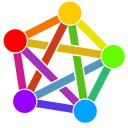Suche
Beiträge, die mit Astrodon getaggt sind
Caroline #Herschel was an absolutely fascinating woman: stunted by a childhood encounter with typhus, she was actively stopped from learning more by her mother. Yet, she prevailed, becoming the first woman to get a salary as a scientist and the first woman to be employed by the government in England:
en.m.wikipedia.org/wiki/Caroli…
The Royal Astronomical Society and the German Astronomical Society are jointly awarding the Caroline Herschel medal
ras.ac.uk/awards-and-grands/ca…
The Caroline Herschel Medal
The Caroline Herschel Medal celebrates the longstanding scientific cooperation between Germany and the United Kingdom. Administered by the Royal Astronomical Socie...The Royal Astronomical Society
1/ When we first joined #mastodon we posted an image of our Extremely Large Telescope, currently under construction in #Chile, and we loved the enthusiasm it generated! Today we share with you a stunning time-lapse of the construction during last year: youtube.com/watch?v=KRcVJf0ims…
#astrodon #astronomy #astrophysics #space #science

Time-lapse of the construction of the world's largest telescope
ESO's Extremely Large Telescope keeps moving forward in Chile! A lot happened in 2024: we started covering the dome with protective cladding, and the structu...YouTube
Taken with the VLT Survey Telescope (VST) at our Paranal Observatory, this image shows galaxy NGC 3640 and the close, smaller galaxy NGC 3641, now in NGC 3640's path.
A team of astronomers used the VST to analyse their globular clusters –– dense spherical conglomerations of old stars. These usually contain some of the first stars created within a galaxy and can therefore act as fossil markers, revealing the galaxy’s history, even after merging events.
The results confirm that NGC 3640 has engulfed other galaxies before. Yet it also shows that the interaction between NGC 3640 and NGC 3641, while fast, is not happening close enough for NGC 3640 to pose a threat... for now.
Read more: eso.org/public/images/potw2507…
📷 ESO/INAF/M. Mirabile et al./R. Ragusa et al.
A new night begins at ESO’s Paranal Observatory, and comet C/2024 G3 makes a grand entrance ☄️ 😎 With it, a swarm of satellites – a growing concern for the darkest skies in the world...
At ESO we have worked extensively not only to measure the impact of satellite constellations on optical and radio observations, but also to escalate this issue to the highest levels.
➡️ eso.org/public/about-eso/dark-…
Thanks to the joint effort of several countries and institutions, this problem is now discussed annually in the Scientific and Technical Subcommittee of the United Nations Committee on the Peaceful Uses of Outer Space.
➡️ skao.int/en/news/612/un-discus…
📹 B. Häußler/ESO
#environment #astrodon #astronomy #science #space
Dark and quiet skies preservation
ESO has been actively involved in the campaign for dark and quiet skies preservation, and is participating in many projects supporting the reduction of pollution resulting from errant light, satellite constellations and aeroplanes.www.eso.org
This Picture of the Week shows the clearest image yet of a filament from the cosmic web of dark matter!
Captured with ESO’s Very Large Telescope (VLT) in #Chile and made of gas clumped together by the influence of dark matter, it stretches out for 3 million light-years, connecting two distant galaxies in the early Universe 😯
Observing the faint glow of this gas required about 150 hours of observing time!
Learn more here: eso.org/public/images/potw2504…
📷 ESO/D. Tornotti et al./Hubble: M. Revalski, P. Francis et al.
New laser-sharp vision for Paranal’s facilities! 😎
In this image, you see the first of nine new lasers that are being built for our Extremely Large Telescope (ELT), currently under construction, and Very Large Telescope Interferometer (VLTI), both located at Paranal in #Chile
The laser projection systems are being built in the Netherlands, and the first one has now successfully passed a review by our engineers ✅ 🎉
🤔 But why do telescopes need lasers? They excite sodium atoms high up in the atmosphere, creating artificial "stars". By monitoring these "stars" we can measure and correct atmospheric turbulence in real time with a fast deformable mirror, obtaining very sharp images!
Read more: eso.org/public/images/potw2503…
📷 ESO/TNO/Demcon/Fred Kamphues
#astrodon #astronomy #astrophysics #space #science #technology
#HappyNewYear 🎉 Boost your #NewYear resolution with adaptive optics. By deforming a thin flexible mirror a thousand times per second you can correct atmospheric turbulence and get sharp astronomical images!
➡️ eso.org/public/teles-instr/tec…
📷 ESO/P. Weilbacher (AIP)
#astrodon #astronomy #astrophysics #space #science
Adaptive Optics
Astronomers have turned to a method called adaptive optics. Sophisticated, deformable mirrors controlled by computers can correct in real-time for the distortion caused by the turbulence of the Earth's atmosphere, making the images obtained almost as…www.eso.org
After all, black holes are not as destructive as we thought! 😮
Using our Very Large Telescope, astronomers have discovered, for the first time ever, a binary star close to our galaxy's supermassive black hole. Binary stars are extremely common throughout the galaxy but not close to the black hole, which makes this new system really interesting!
Named D9, it looks like a single dot, but its speed wobbles periodically back and forth, revealing that this is in fact two stars orbiting each other as they move together around the black hole.
Interested? Read more: eso.org/public/news/eso2418/
Video summary: youtube.com/watch?v=SQVG7pqcHT…
📷 ESO/F. Peißker et al., S. Guisard
#astrodon #astronomy #astrophysics #space #science
First ever binary star found near our galaxy’s supermassive black hole
An international team of researchers has detected a binary star orbiting close to Sagittarius A*, the supermassive black hole at the centre of our galaxy.www.eso.org
#Introduction Hi #fediverse ! We’re the European Southern Observatory, and we design, build and operate ground-based telescopes.
One of them is our Extremely Large Telescope, currently under construction in #Chile. It will have a 39 m mirror, and its rotating enclosure will weigh 6100 tonnes, or about 700 mastodons!
We’re looking forward to chatting with all of you about #astronomy
📷 ESO/G. Vecchia
















